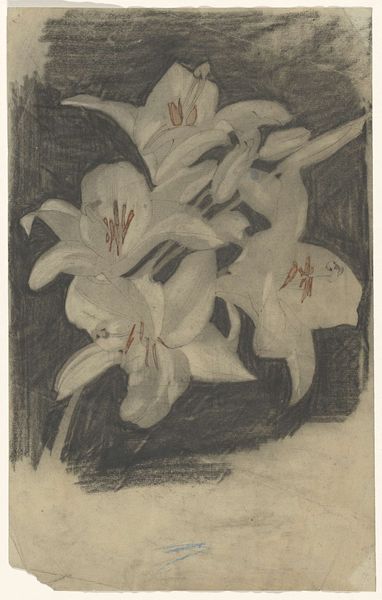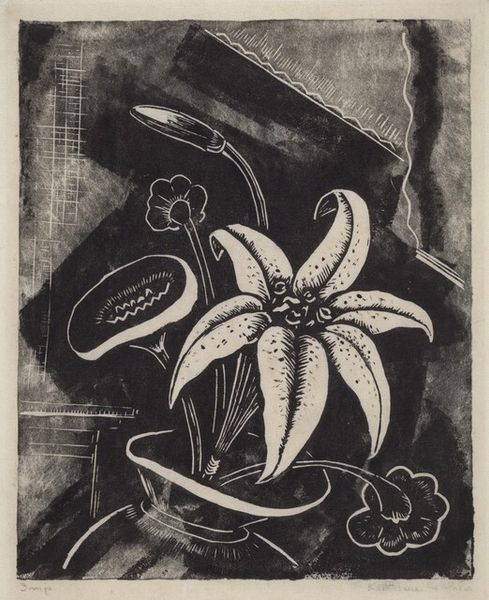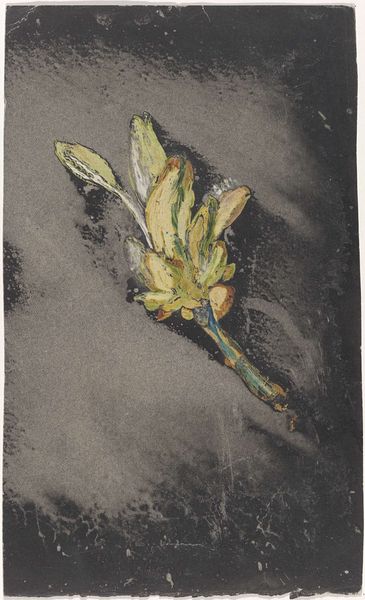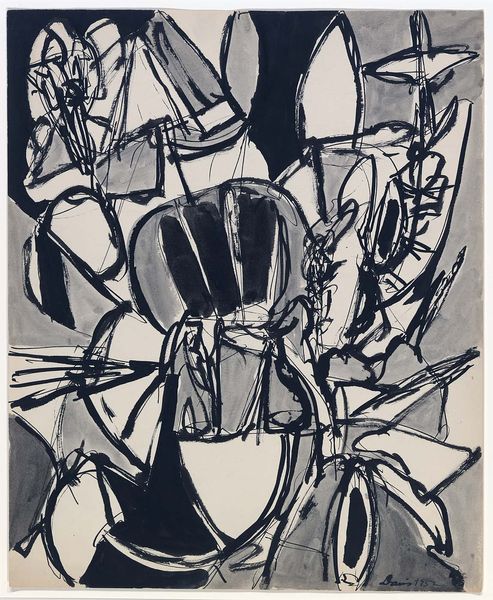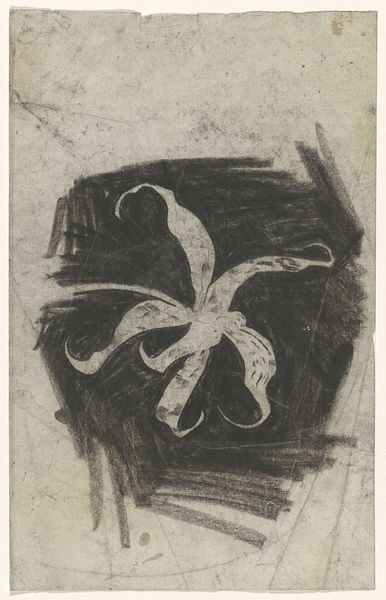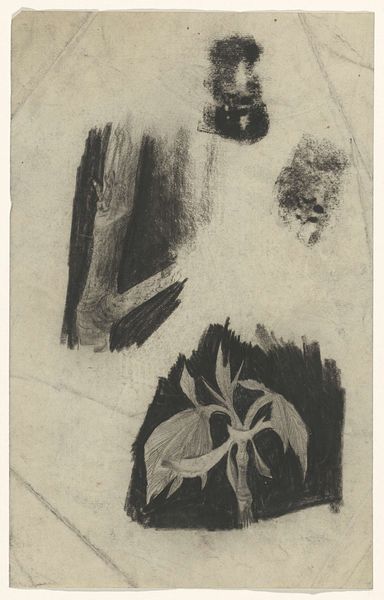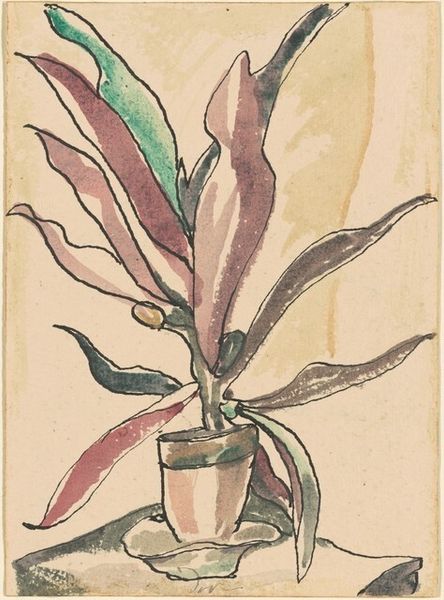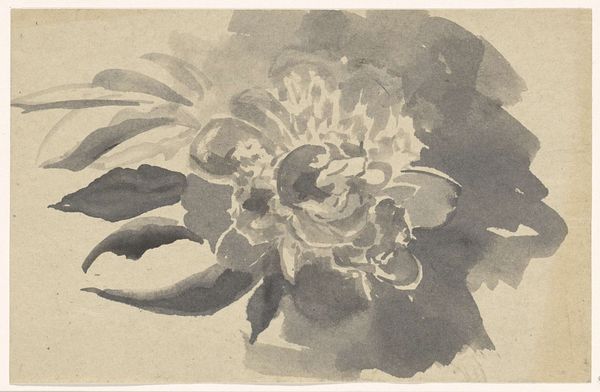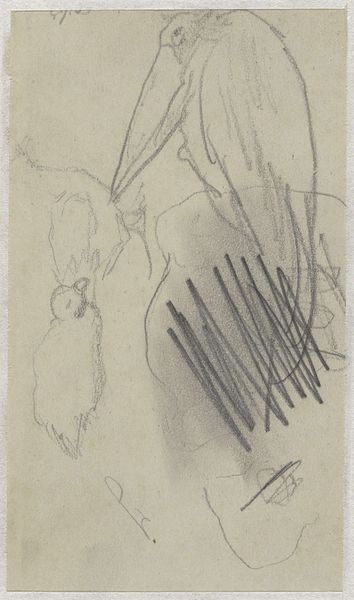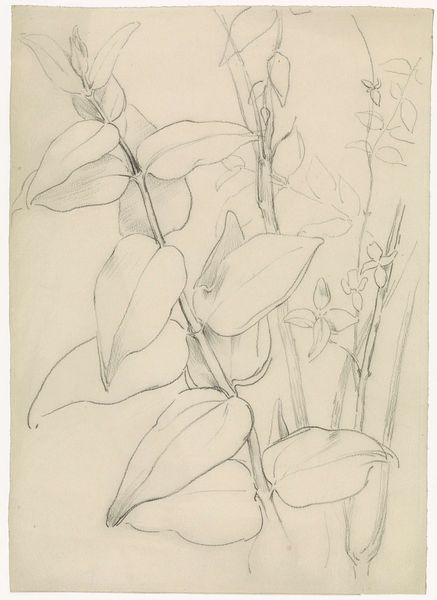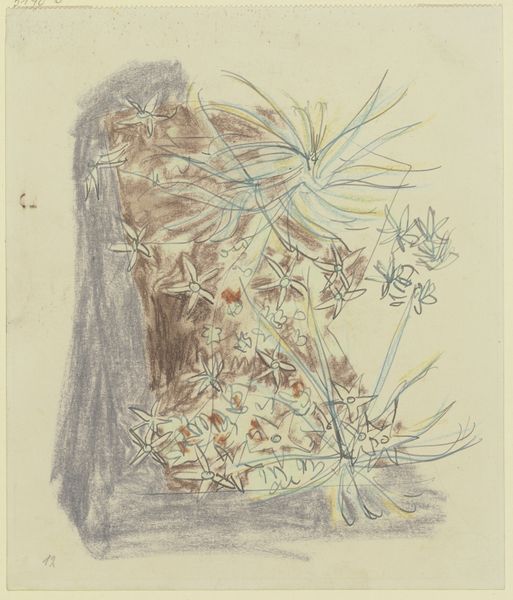
drawing, charcoal, pastel
#
drawing
#
landscape
#
charcoal
#
pastel
#
modernism
#
realism
Dimensions: height 385 mm, width 213 mm
Copyright: Rijks Museum: Open Domain
Curator: Let's explore this striking piece, “Twee orchideeën,” or “Two Orchids,” a drawing made sometime between 1874 and 1945 by Carel Adolph Lion Cachet, held here at the Rijksmuseum. Editor: My immediate impression is somber. The stark charcoal and pastel create a rather melancholic mood, even with such a delicate subject as orchids. Curator: Indeed, orchids have historically carried significant symbolic weight. In some cultures, they represent love, luxury, and beauty, while in others, they're tied to virility and strength. Given the artist's life, this juxtaposition creates an intriguing tension. Editor: It does. And looking at the marks, the materiality of charcoal layered with pastel offers a glimpse into Cachet's process. I'm drawn to the texture of the paper itself; it's not pristine, suggesting perhaps a certain urgency or even resourcefulness in the making. Was paper readily available at that time in that quality, for example? Curator: Well, his oeuvre includes printmaking, so access to varied material qualities may have informed his mark-making and approach across other media. These orchids may not convey overt societal narratives, yet it echoes of the larger historical narratives, connecting the universal themes of life and decay. The artist leaves quite some raw canvas on the page and does not attempt to beautify nature in the drawing. Editor: True, he’s avoiding any highly stylized romanticization. He clearly had access to fine pastel and drawing papers, but chose this. I see the social value as resting more so in the materials and process—revealing an intentional raw view of what are generally taken as graceful, elegant blossoms. Curator: This resonates. It’s almost as if the drawing invites a reflection on the transient nature of beauty itself, offering a stark counterpoint to the idealized portrayals of nature often found in art. Editor: Precisely! It is about life-cycle observation via mark making with limited and affordable supplies! Cachet made a conscious effort, utilizing the labor available, even if limited. This approach opens us up to a potentially wider range of creative insight and expression. Curator: Considering these layered insights offers an experience beyond mere visual appreciation; it provides space for contemplation on themes relevant far beyond the confines of the artwork itself. Editor: It's remarkable how simply observing materials and their usage reframes how we perceive beauty and intention. A worthwhile reflection.
Comments
No comments
Be the first to comment and join the conversation on the ultimate creative platform.
